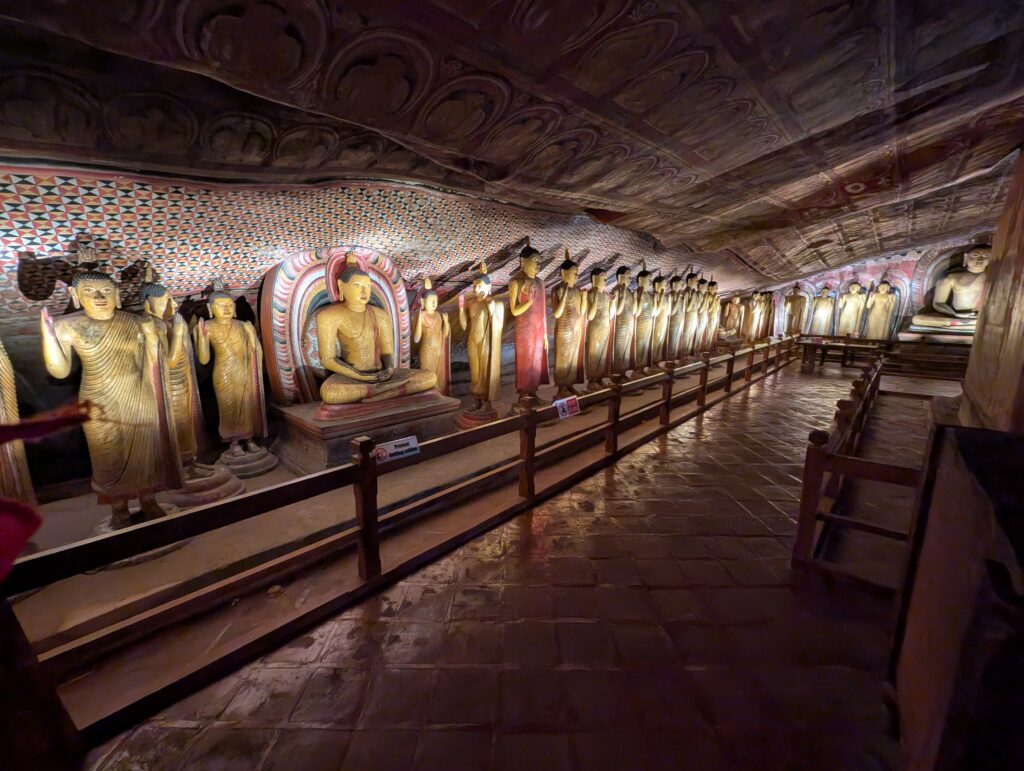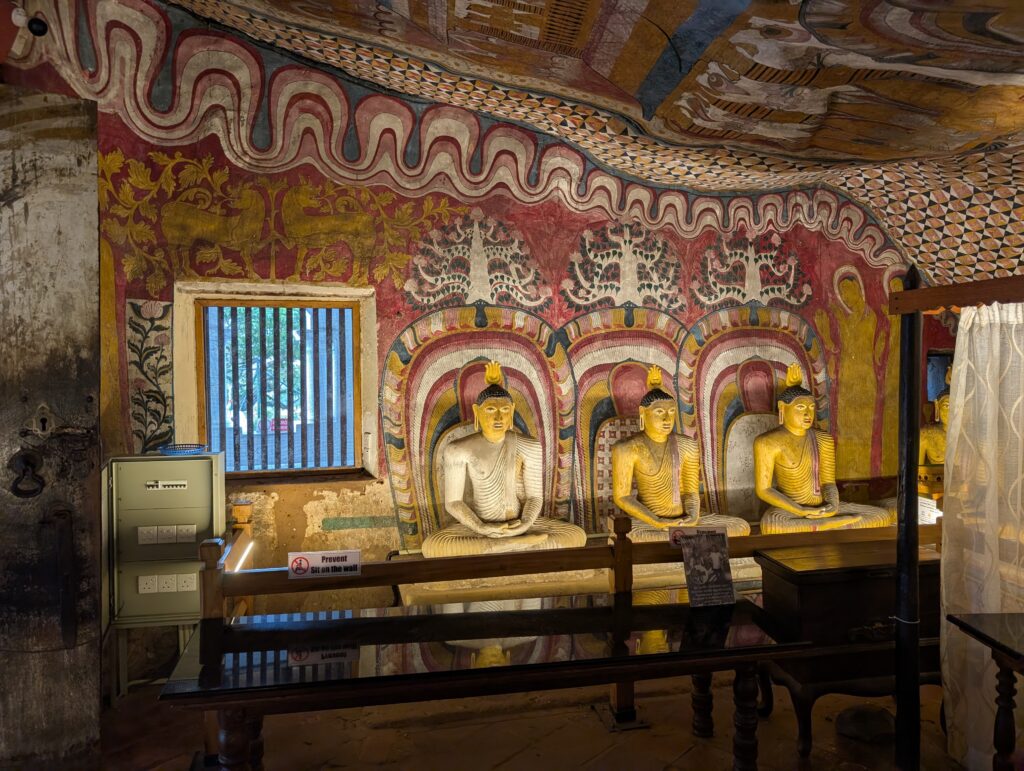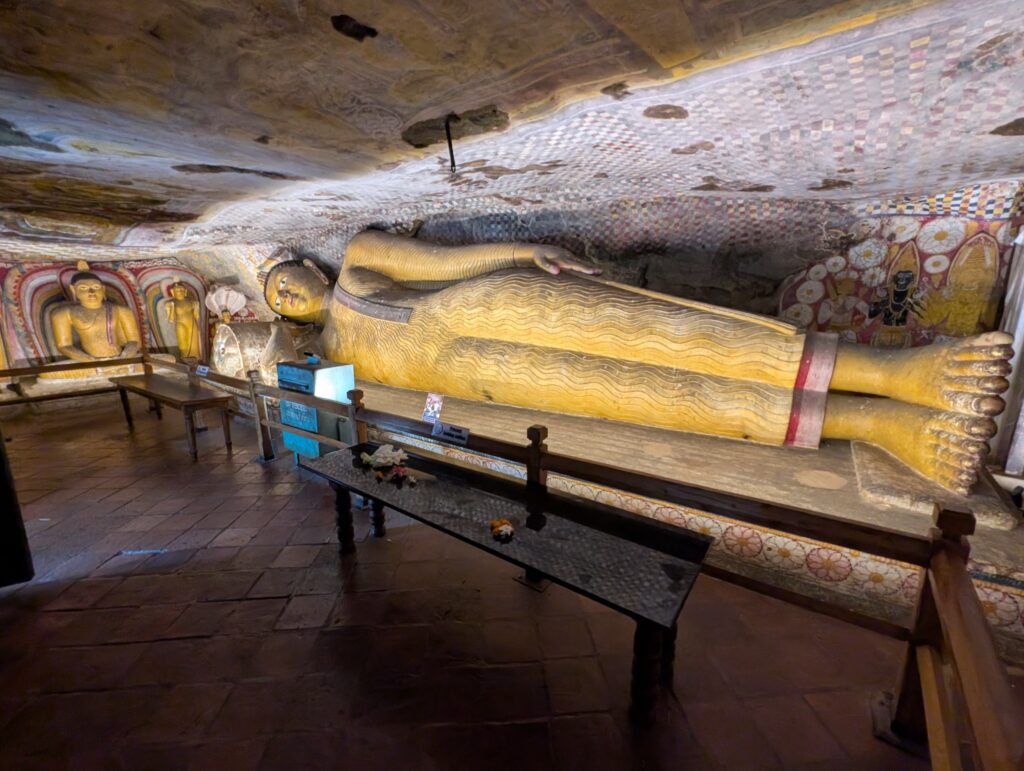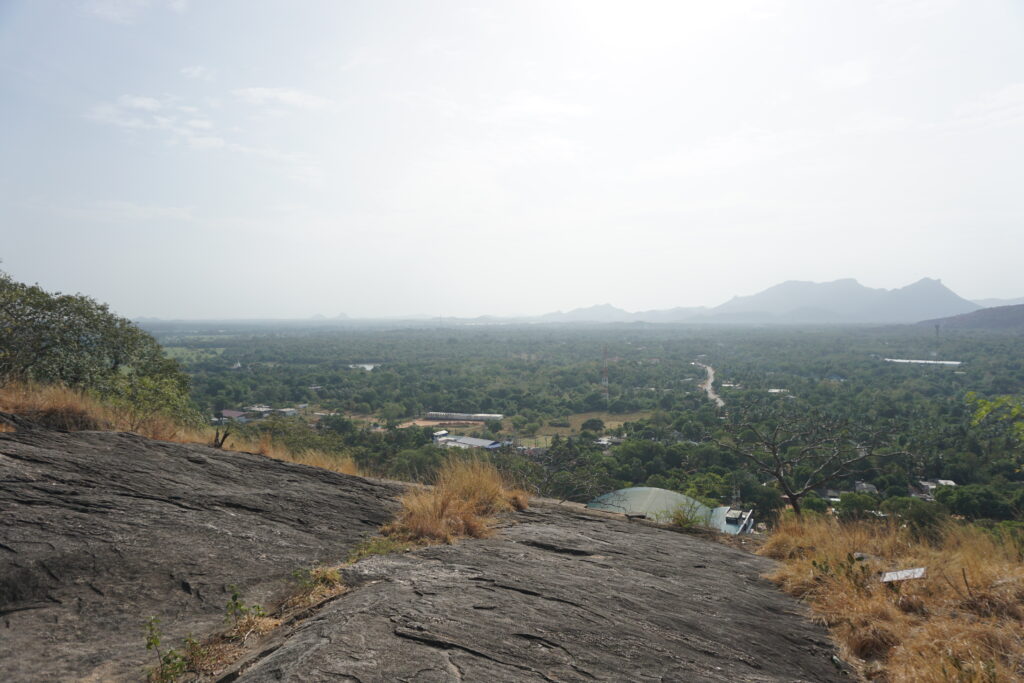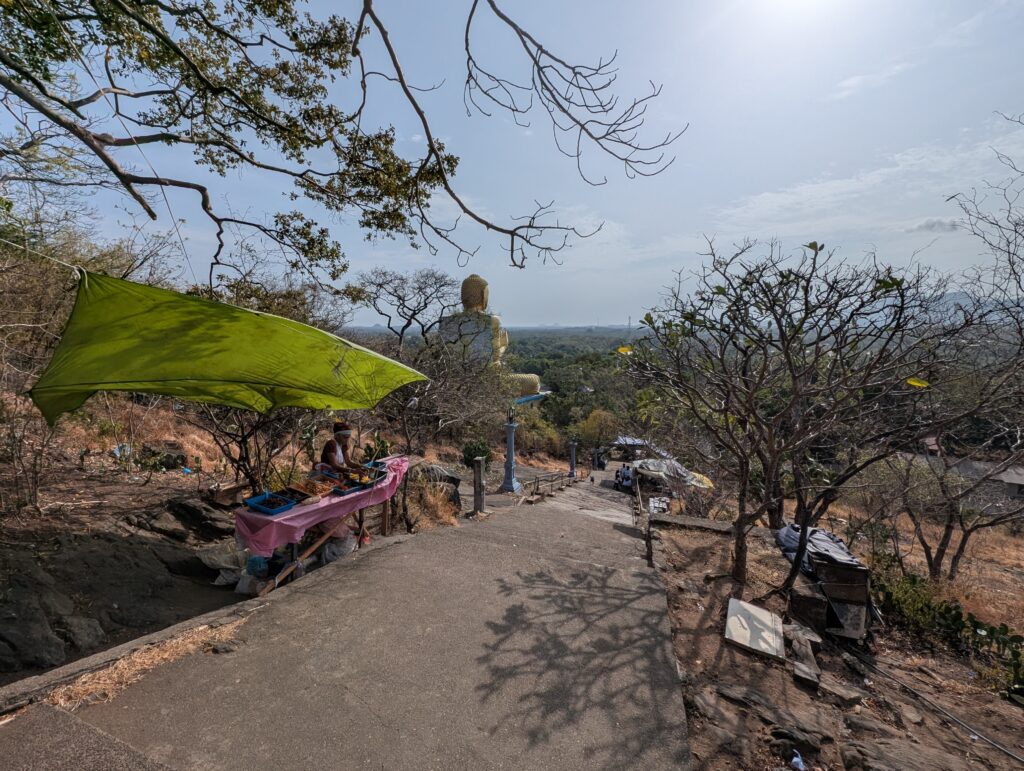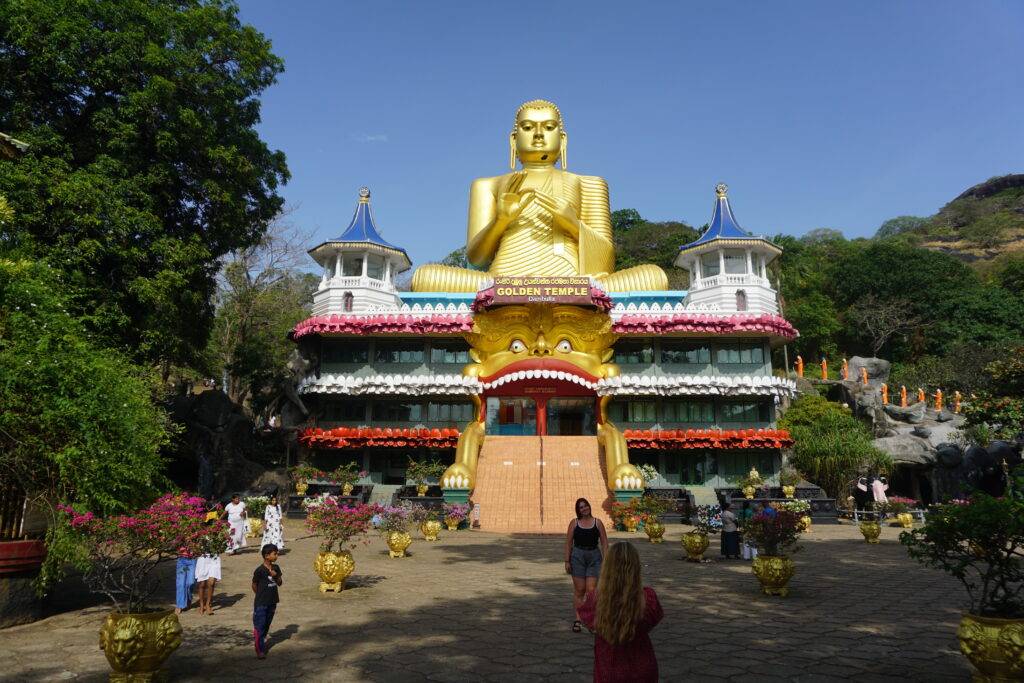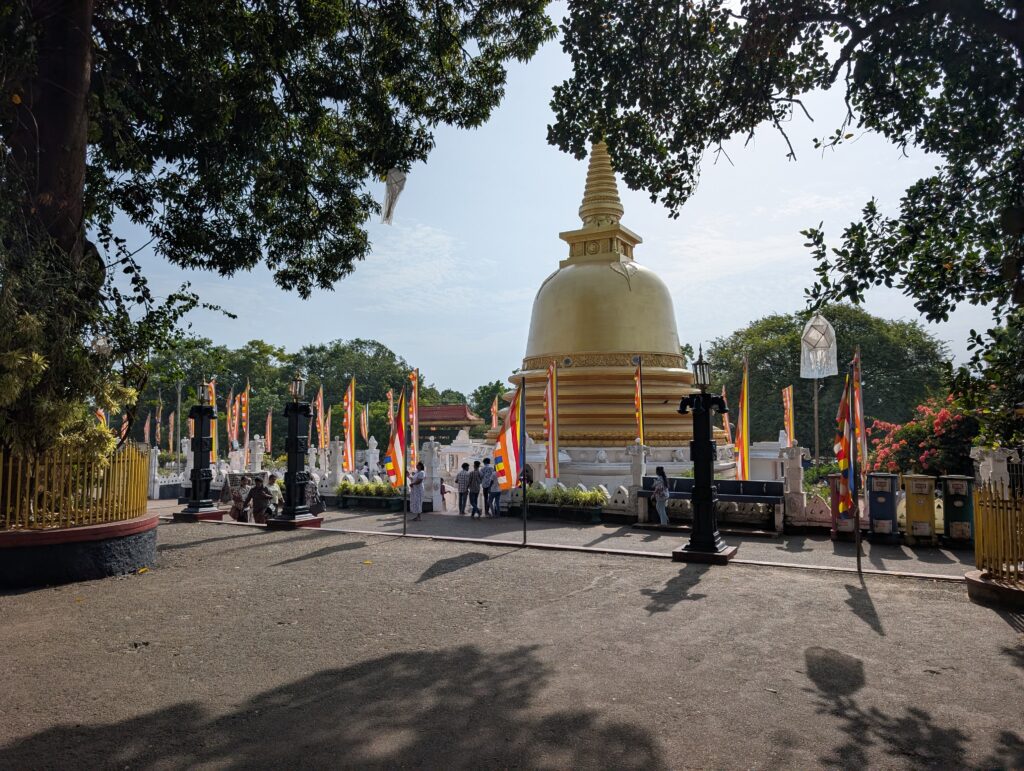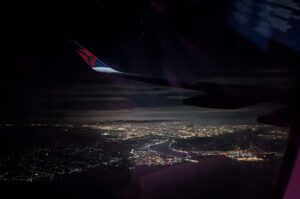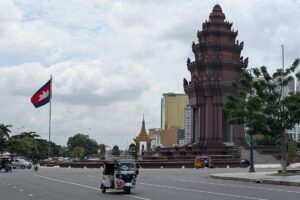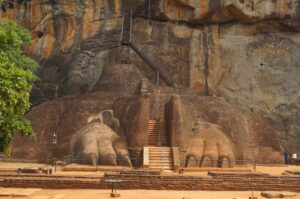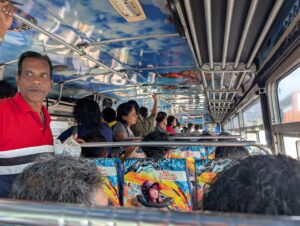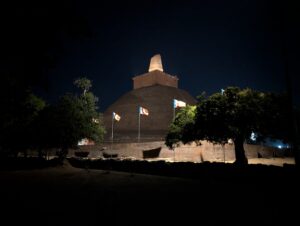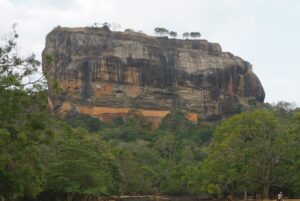Dambulla
Home of the Cave Temple
Dambulla rock stands nearly as tall as Sigiriya over the flat lands below, at over 500 feet. Dambulla is a much rounder, less steep formation than Sigiriya, however. Dambulla is home to a series of caves, some of which were used as habitations as long as 2,700 years ago. When forces from South India invaded Sri Lanka in the first century BC (as they often did), they displaced the kingdom and royal family that had resided in Anuradhapura. The king fled here, until he was able to eventually displace the invaders and reestablish independence in Anuradhapura. Having accomplished this, in thankfulness he ordered a temple complex to be built in these caves at Dambulla.
Five of the most prominent caves located under rock overhangs near the top of the formation are preserved and house countless ancient paintings and statues. Most of these are Buddhas, as one might expect. There are also statues of Hindu deities such as Vishnu and Ganesha. Others depict Sri Lankan kings. While the temple complex was established in the first century BC, it continued to be added to throughout the time when Anuradhapura was the capital and even sometime afterward. One king ruling from Polonnaruwa gilded many of the statues in the late 12th century. Maintenance, including repainting items continued through the 19th century. In the 1930s, decorative arches were added to the entries of the main caves. It isn’t always clear which artifacts and pieces of art date from when, but the temple complex as a whole is quite old and has all the aura of an ancient sacred place.
(Continued)
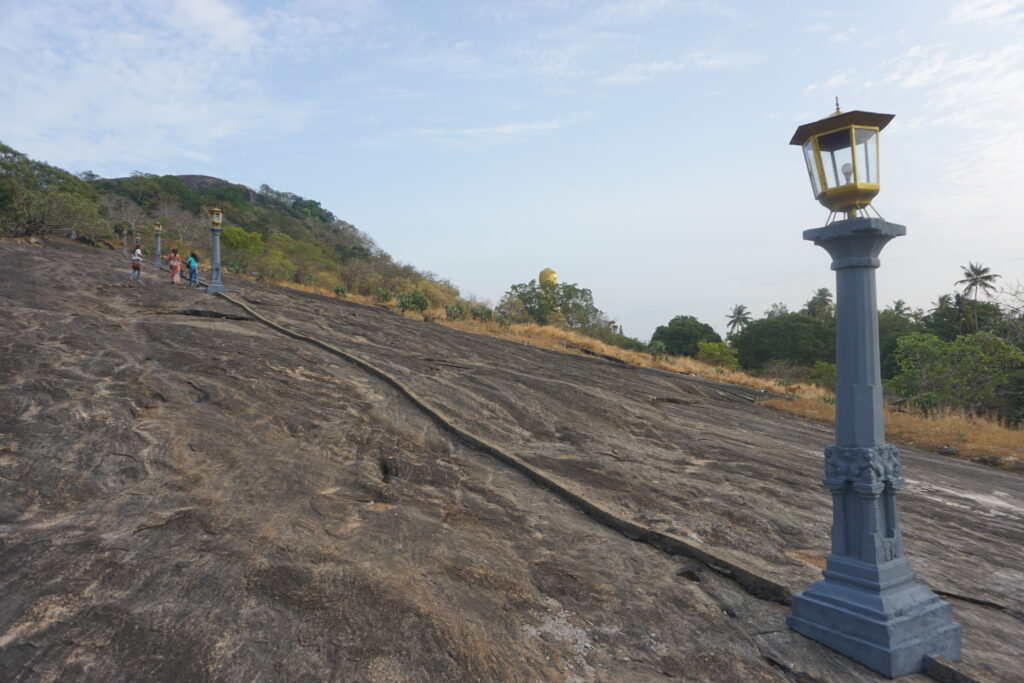
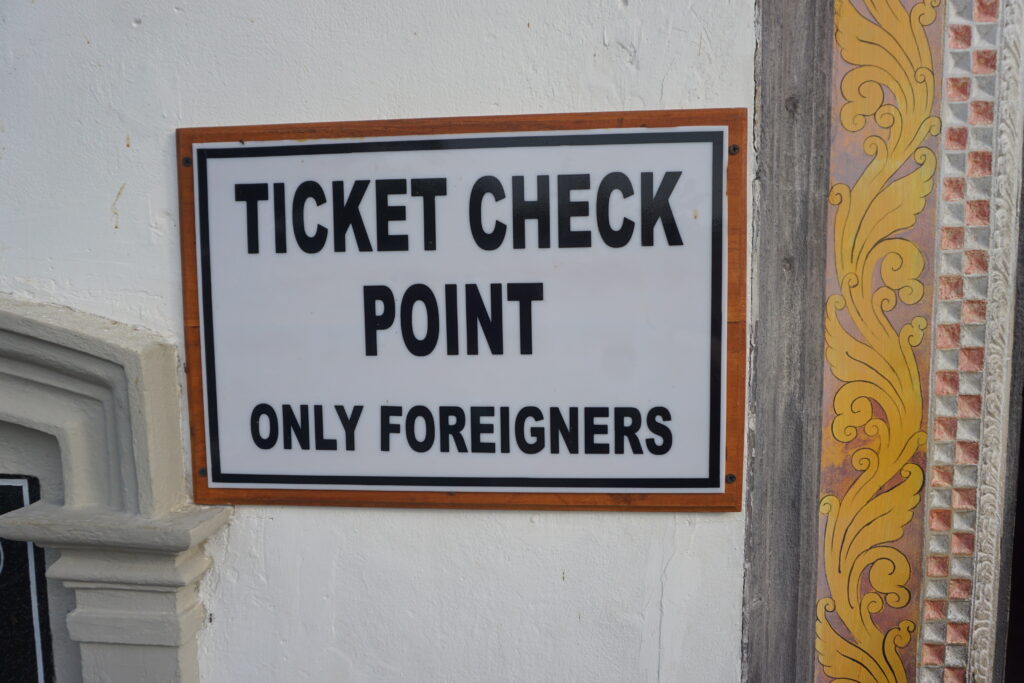
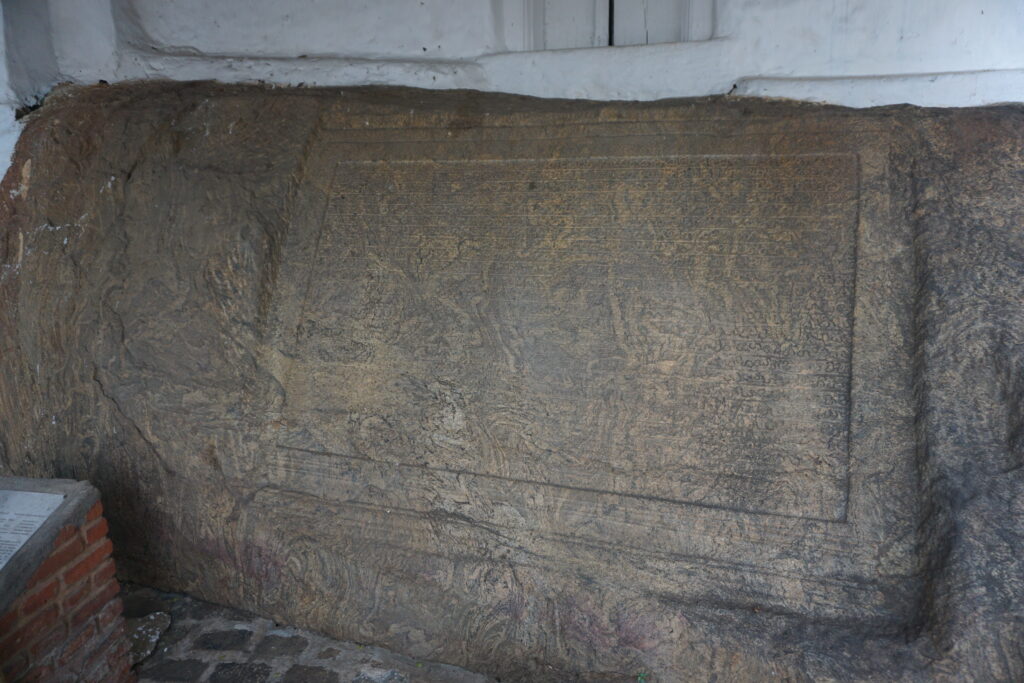
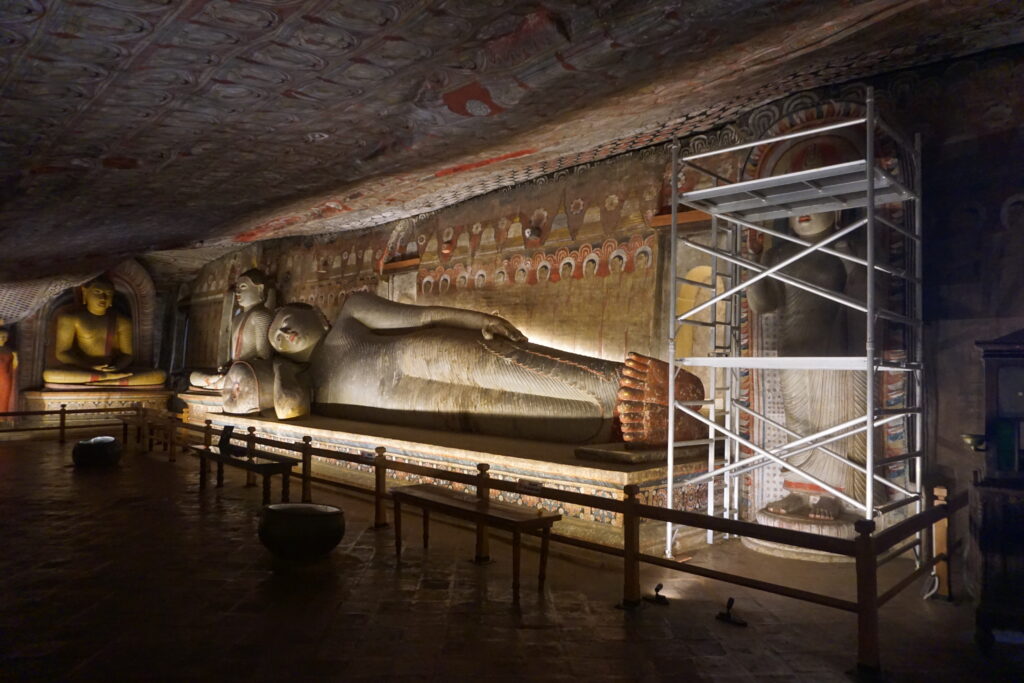
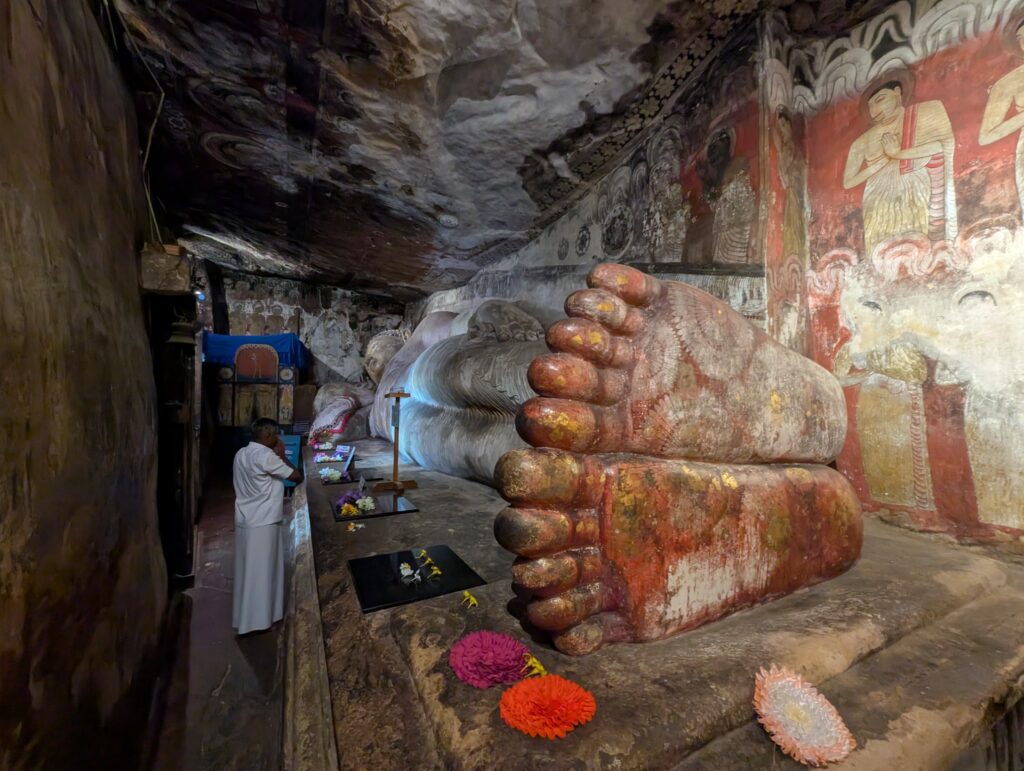
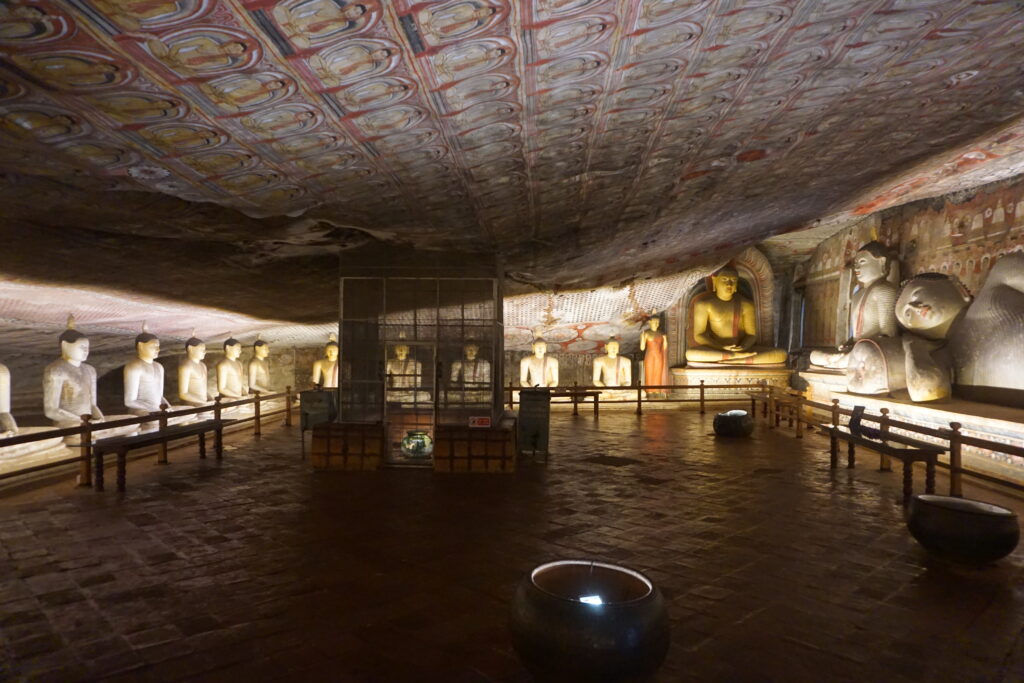
The Dambulla Cave Temple is still in use as an active place of veneration. Monks on hand offer blessings and prayer to visitors. Some of this appears to be aimed at enhancing the experience of tourists. Most foreign visitors arrive on buses with organized tours. My motel was within walking distance, so I simply hiked up the rock. I had to hike down the other side of the rock and summon a clerk by phone to buy my ticket – 2,000 rupees for foreign visitors but free for Sri Lankans. By the time I had waited for the clerk to arrive and reascended the hill, the tour buses had begun to arrive. The bus tourists all seemed to be fully enjoying the spirituality of the place. The blessing from the monks only added to that experience. There was also a school group visiting while I was enjoying the breeze high above the hot flat plain. I did not see any of them visit the monks, though.
The view of the surrounding town and the plains extending in all directions was itself worth the climb. Sigiriya is plainly visible, some 12 miles distant. Dambulla has a giant Buddha statue and other more modern temples visible below. Later in the morning, I walked down the side of the mountain toward the giant Buddha past all of the vendors on the way back toward my motel. I had more caves to see before I descended, though.
(Continued)
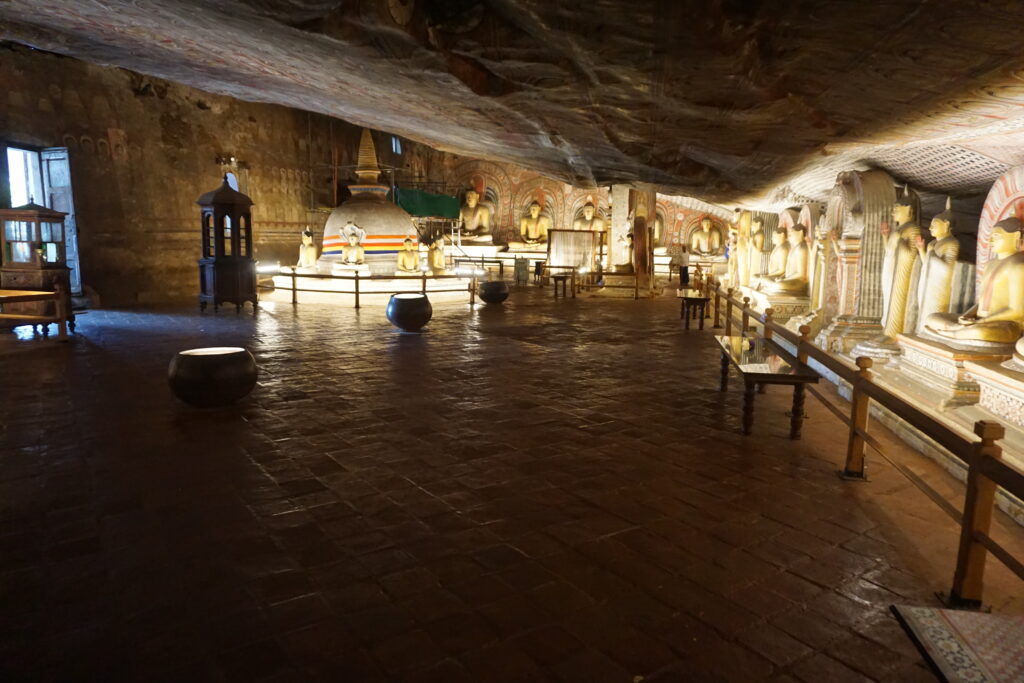
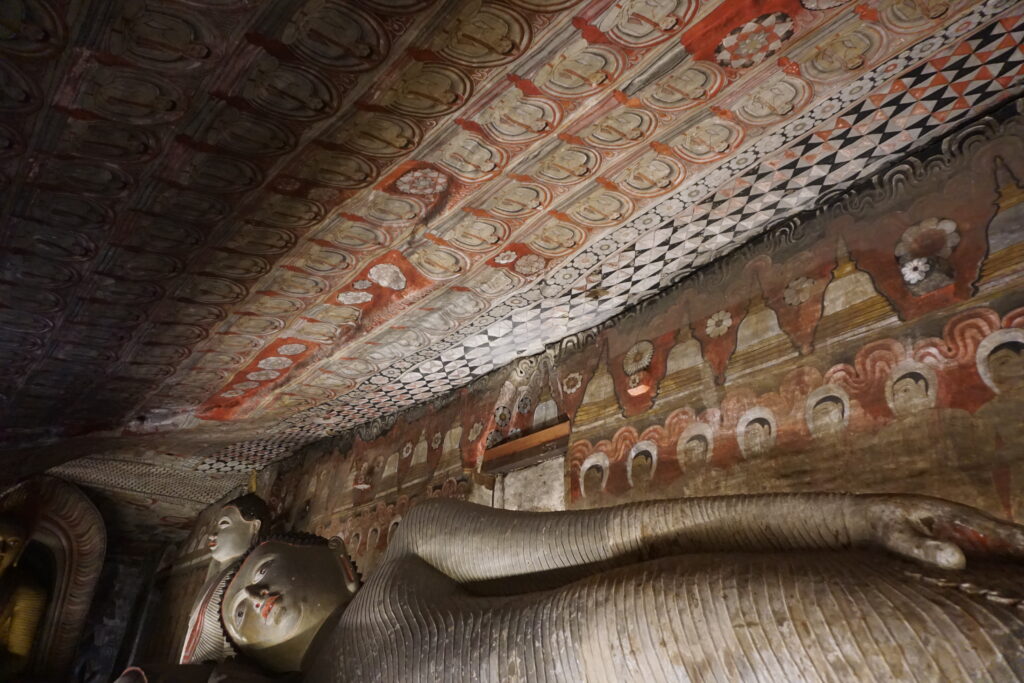
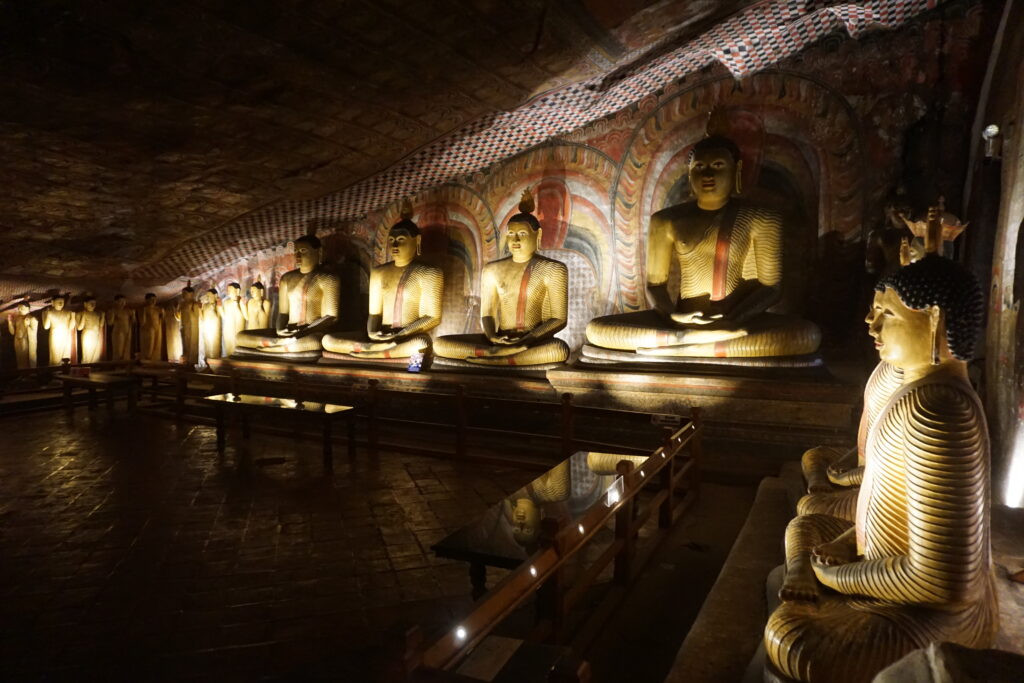
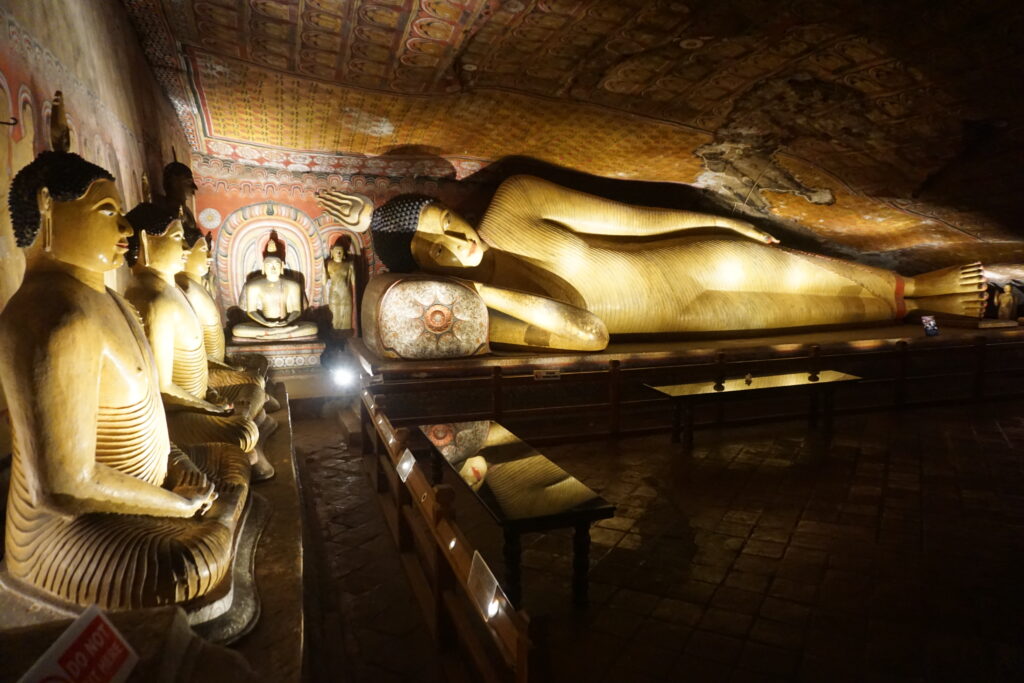
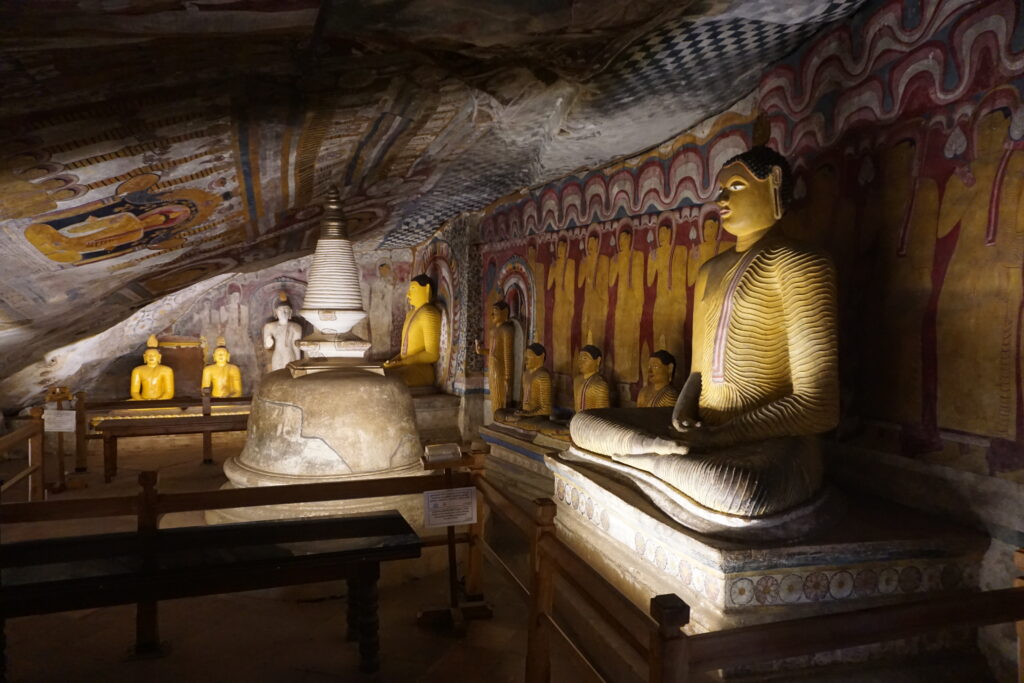
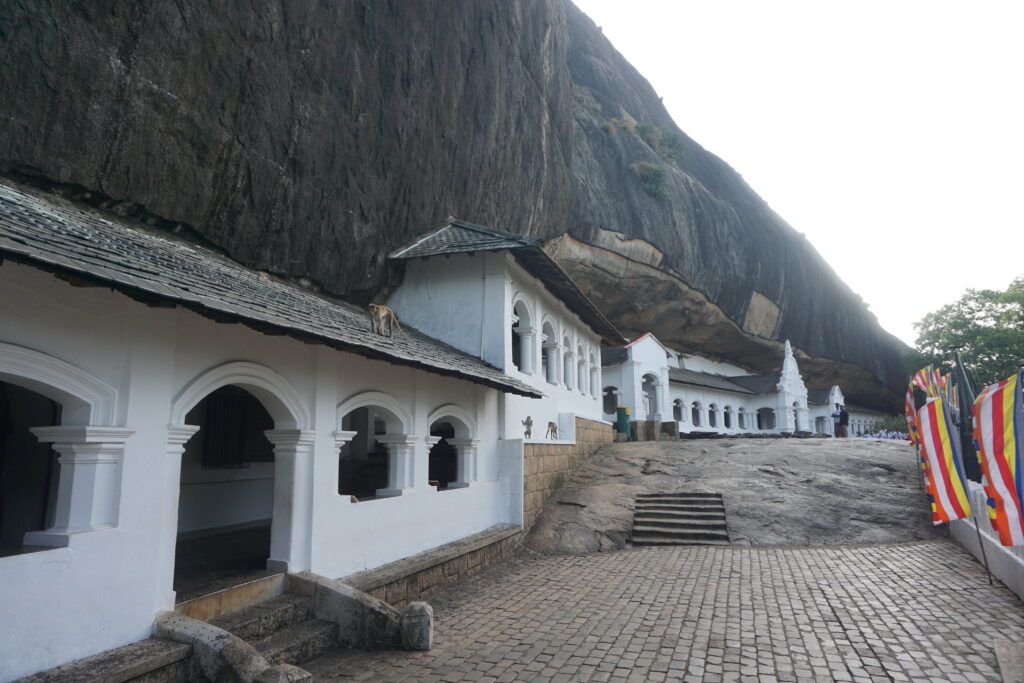
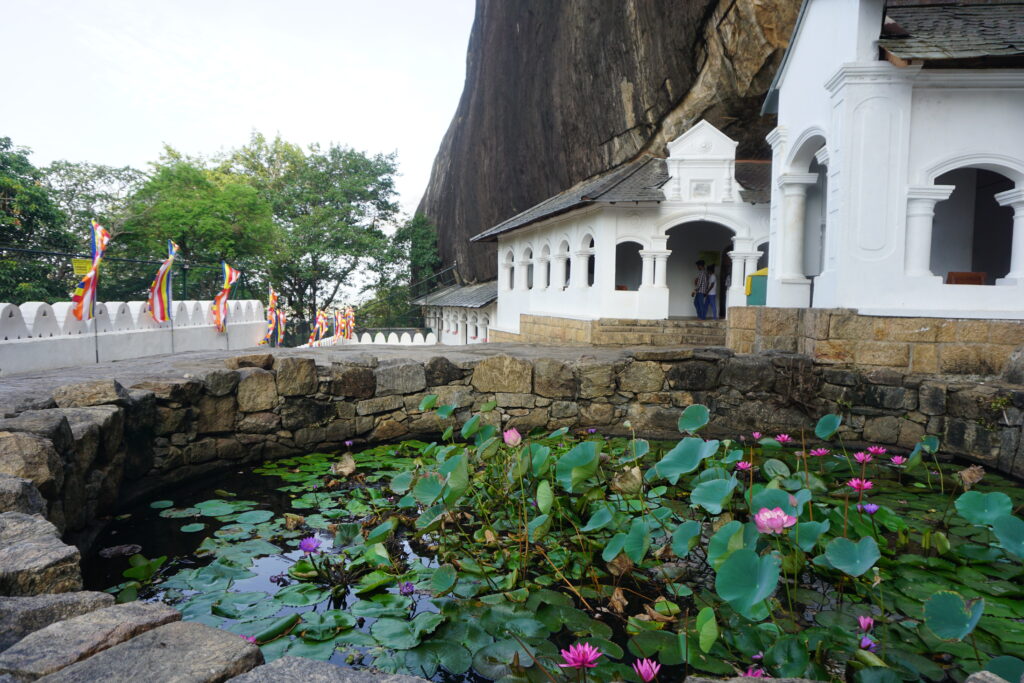
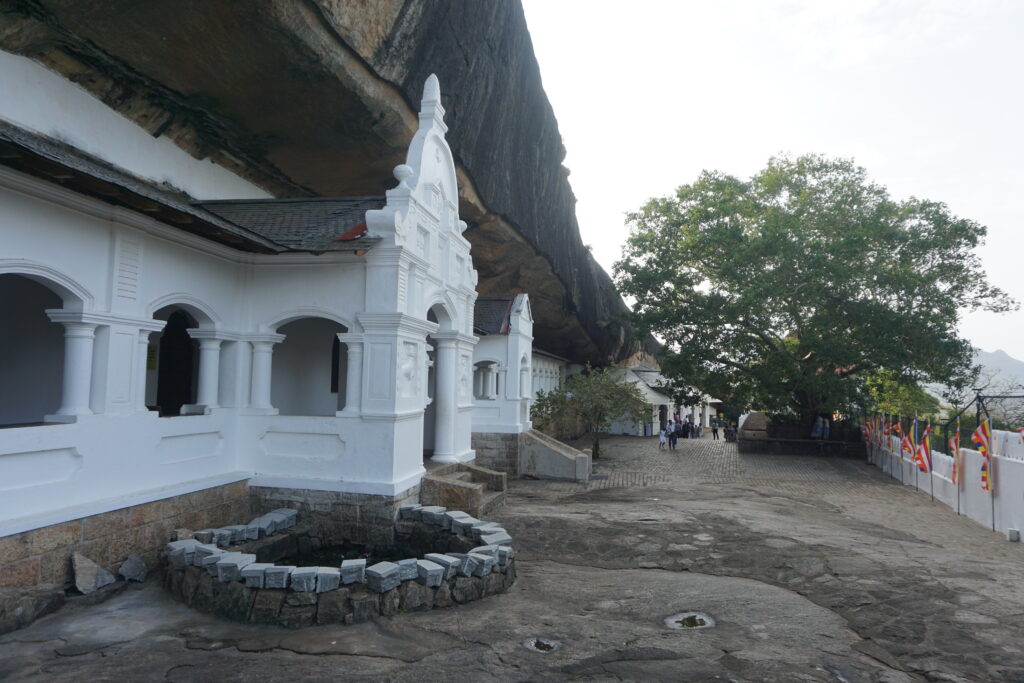
Sequentially, the first temple after the entrance is the Cave of the Divine King. It features a reclining Buddha statue, well over 40 feet long. Near Buddha’s head sits a statue of the Hindu god Vishnu. A statue of the Buddha’s prominent scribe and disciple Ananda rests near the foot of the statue, paying homage as a good student would. Next comes the Cave of the Great Kings. As the name implies, there are statues of devout ancient Sri Lankan kings near the entry to this cave. Along with a few Hindu images, there are over 50 Buddha statues in various postures. After the Cave of the Great Kings, you enter Cave of the Great New Monastery. This third cave contains great ceiling murals depicting the life of the Buddha. While the original paintings are thought to have been from the 18th century, I am unsure about the age of the current artwork. The fourth cave is similar to the third but smaller, and the fifth has more modern masonry and plaster statues as opposed to the hewn rock sculptures in the older temples.
I took the scenic route back to my motel to collect my car. I bypassed the Buddhist museum and modern temples at the bottom of the hill, but I paused a few minutes in the square beneath the Giant Buddha to people watch. I met several more Spanish tourists here. I hopped in the car and began the harrowing drive of over two hours through reckless traffic and hairpin turns toward Kandy. I stopped in a village along the way to grab something to drink and bought a bunch of bananas from a roadside fruit vendor. This cost only 100 rupees or so. The proprietor quoted me the price per kilogram, then asked me how much I wanted. I told him one kg was fine. He proceeded to chop a hunk of tiny bananas off of a larger bunch. He threw them on the scale. It read 1.02 kilograms. He did that just by eyeing it! The small bananas had a slightly waxy taste to them. I munched on a few as I made the sporting drive to Kandy.
